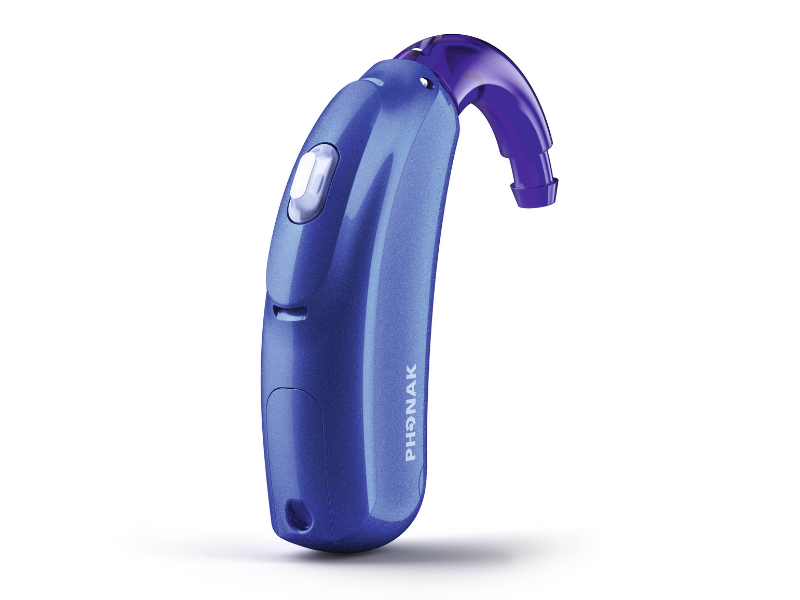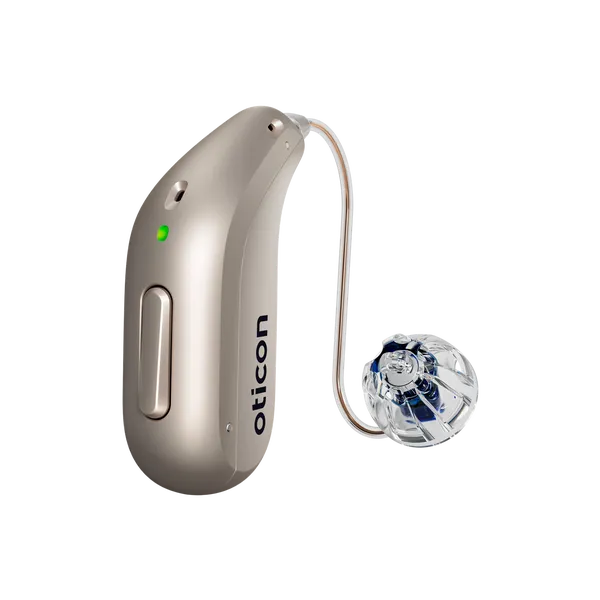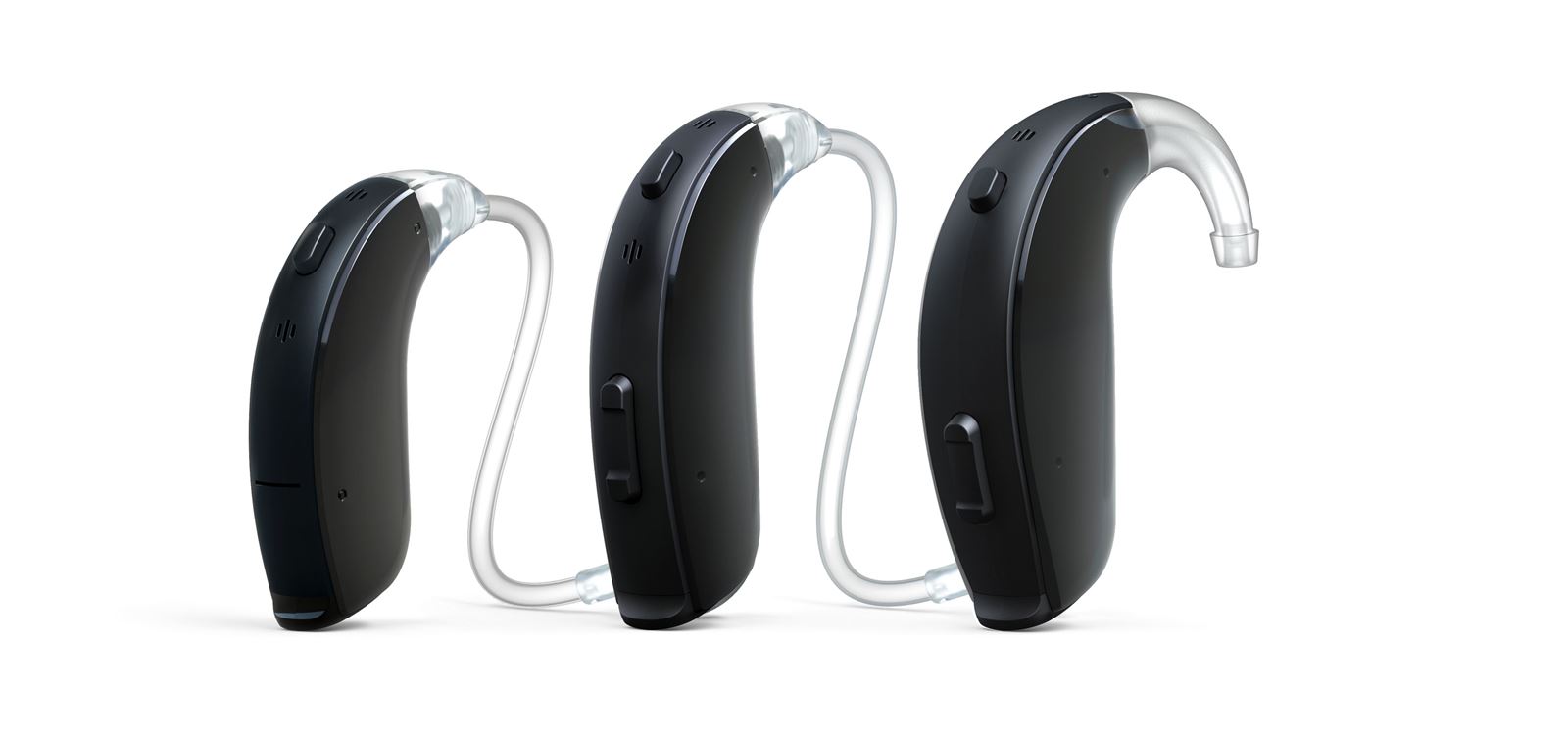
Behind-the-ear, or BTE hearing aids, are the most traditional form of hearing aid. The microphone sits behind the ear and transmits sound into the ear. This may be done by a sound tube, which is acoustic tubing with a customised ear mould, or by a thin tube, which includes an ear dome or micro-mould that sits within the ear canal.
They are extremely powerful and can be fitted with different ear domes and moulds, making them suitable for all levels of hearing loss.
At South East Hearing Care Centres, we’re proud to offer a wide range of behind-the-ear hearing aids by the leading hearing aid brands. Book an appointment at one of our Sussex clinics to discuss your hearing needs.
Hearing aid features:
- Suitable for all types of hearing loss, including severe hearing loss
- Wireless and telecoil options are available
- The most powerful kind of hearing aid
- Uses a dual microphone to make listening in all environments easier
- Rechargeable hearing aids are available
Behind-the-ear styles

Receiver in the ear RITE hearing aids
Receiver-in-the-ear (RITE) or receiver-in-canal (RIC) models are a hybrid of BTE and in-the-canal hearing aids. They offer a discreet and versatile option and have a casing behind the ear connected by a thin wire to a speaker or “receiver” that fits securely in the ear canal. RITE/RIC hearing aids can accommodate a wide range of hearing losses, from mild to severe hearing loss. Their dual microphones excel at picking up sounds in noisy environments, while their customisable fit and range of receiver power levels ensure a natural, comfortable listening experience tailored to each user’s needs.

Behind the ear hearing aids
The main component of a BTE hearing aid rests securely behind the outer ear. This casing houses the microphone, amplifier, processor, and battery. Sound is transmitted through a small tube or wire into an earmold or tip that fits inside the ear canal. Their robust design and generous battery size allow for increased power and advanced sound processing features. BTEs are easy to handle and maintain, making them a practical choice for users with dexterity issues. Unlike their bulky ancestors, modern BTEs are more cosmetically appealing with various discreet skin-toned options.
The benefits of behind-the-ear hearing aids
- Extremely powerful digital hearing aids—their bigger size allows for far more features to be added, including larger batteries, which increase battery life and Bluetooth connectivity.
- They can be fitted with a range of ear moulds and domes to suit every level of hearing ability, from mild to profound hearing loss.
- Available in both wireless and telecoil options.
- They’re comfortable—wearing hearing aids can be uncomfortable for some, but because BTE hearing aids don’t fit in the canal and are more on the outer ear, most users find them more comfortable.
- Easy to keep clean – the sound tubes or ear domes are the only part of the hearing aid that comes into contact with the ear canal, making them less vulnerable to ear wax.
The limitations of BTE hearing aids
- Due to the microphone’s external location, natural acoustics can be lost, and it’s more likely to pick up wind noise.
- Because sound is transmitted through tubes, it is less clear and natural. This can lead to tube resonances (artificial peaks and troughs of sound).
- The tubes become brittle over time, affecting the transmission and sound quality and requiring replacement.
- Condensation can build up in the tubing and affect sound quality. Moisture-free tubing is available, but this rubbery tubing is more likely to slip out of the ear mould and irritate the side of the ear.
- Dead skin can damage the microphone.
- BTE hearing aid styles make telephone usage more complex, and the telephone needs to be held over the front microphone.
- Whilst BTE hearing aids provide a wealth of benefits, they are more visible than other hearing aid types, which some users don’t like.
Book an appointment at South East Hearing Care Centres
If you’re interested in changing your current hearing aids to BTE hearing aids or need a hearing test to determine whether you would benefit from hearing aids, get in touch today. Our Horsham, Chichester, and Seaford clinics provide high-quality hearing care and can assess your hearing needs.
Book an appointment with a hearing specialist today to discover the right hearing aid for your needs.
FAQs
What is the smallest behind-the-ear hearing aid?
The smallest BTE hearing aid style is the miniRITE. Its casing sits behind the ear and is connected by a thin wire to a tiny speaker or “receiver” that rests in the ear canal. The receiver’s small size and positioning make it very discreet and unobtrusive.
Should I choose behind-the-ear or in-the-ear hearing aids?
The choice between BTE and in-the-ear (ITE) hearing aids depends on your hearing needs, dexterity, and preferences. BTEs are generally recommended for moderate to severe hearing loss since they can house more powerful amplifiers. They’re also easier to handle and make volume adjustments on. However, ITEs are less visible and may be preferable for mild to moderate hearing loss. Ultimately, it’s best to consult a hearing professional who can evaluate your unique situation and recommend the optimal hearing aid style and configuration.